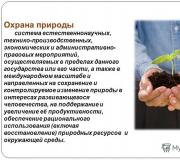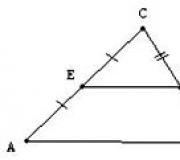A very rare type of patchwork technique. Kinusayga Description
To use presentation previews, create an account for yourself ( account) Google and log in: https://accounts.google.com
Slide captions:
Creative project “Friends” Implementation of the project using the kinusaiga technique technology teacher: Saryglar G.Ch.
Content creative project Goal and objectives of the project 1. Research stage: justification of the project development of ideas and project options analysis of the idea and selection of the optimal option Description of the project 2. Technological stage: tools, materials and choice of technology for performing the work sketch of the project safety precautions and sanitary and hygienic requirements. technological map for manufacturing panels 3. The final stage: environmental assessment of the project economic assessment project Evaluation of the work result Bibliography
1.Project 2.Creative process 3.New product
The purpose of the creative project: to apply the skills acquired in technology lessons in the production of panels. Tasks set for the project: Find information in Internet links and select interesting topic for creativity. Study the features of the “kinusaiga” technique. Follow safety rules when working.
1. Research stage: Justification of the project. Japan as a country interests me very much, and more recently also in handicrafts. The Japanese have been famous for their handicraft techniques since ancient times. New technology Kinusaiga needlework arose when Japanese Maeko Takashi figured out how to use old silk kimonos. At first glance, the technique resembles patchwork, but in fact everything is original. Using the kinusaiga technique, you can make panels of various themes and even paintings. You can also imitate this technique and make a “Friends” panel in Tuvan national clothes.
Development of ideas and options for project implementation.
Analysis of the idea and selection of the optimal option. The chosen idea is suitable for performing work using the Kinusaiga technique: the technology for performing the Kinusaiga technique is simple; The material for the panels is available to everyone.
Description of the future project. Decorative panel using the kinusaiga technique. The panel consists of two parts of a girl and a boy in Tuvan national robes. National silk and brocade are used. The blue color of the boy's robe represents masculine calm, and the red color of the girl's robe represents the beauty and brightness of the feminine.
II. Technological stage: Tools and devices used when performing the work:
Sketch of the creative project “Friends”. Sketching.
Technological map for making panels. Coloring the sketch taking into account the combination of fabric colors; The drawing is transferred from paper to foam plastic through carbon paper; The foam is carved along the contour of the design using a stationery knife; Cut the fabric into small pieces of panel parts with an allowance; Fastening fabric parts in cut grooves; Fastening fabric parts - the background of the panel; Final finishing of the panel.
Finished panel “Friends”
Safety precautions when working with tools. After work, keep the blade of the stationery knife closed and pass the stationery knife to each other with the blade facing you. Do not put the nail file in your mouth. Store tools in a special box. While working, place the scissors on the table with the blades closed. Take a break from work every 30 minutes.
III. The final stage. Environmental assessment of the project: Panel “Friends” – environmentally friendly handmade; no emissions of pollutants into the atmosphere, soil, or water bodies; when working with the material, no harmful substances are released to the human body; And this work does not harm the environment.
Economic assessment of the project. When making panels, they do not spend money on purchasing material: pieces of fabric are leftovers from cutting garments. The foam was taken from the packaging of household appliances.
Self-assessment and evaluation of the project result. When making panels, it may be difficult to work with the “torgu” (the edges of the “torgu” pieces are free-flowing), but you have to try. Creating using the Kinusaiga technique is not difficult and pleasant. You can make other more voluminous works and hang them at home or give them as gifts.
Assessment of activities during the implementation of a creative project. The implementation of the project contributes to the discovery and development of children’s abilities in the field of handicrafts, as well as project activities; mastering work skills; development of aesthetic taste and creative attitude to the work performed, the individuality of children.
Sources of information used in the implementation of the project: Website “Patchwork without a needle”. Access mode: http://pechvork. ru.
Thank you for your attention.
Open lesson on the subject “Labor Training”
patchwork technique on foam plastic
"Kinusaiga"
The purpose of the lesson:
Creation decorative panel using the Kinusaiga technique.
| Lesson Objectives | |
| Educational | Organize search activity students to become familiar with this technique. Promote manifestation various types creativity in children, explore and understand new technology, be able to find bright and harmonious contrasts in the color and texture of the fabric. |
| Educational | Formation in students of the ability to communicate through group work, the ability to listen and correctly evaluate the answers of classmates. Awakening children's interest in new techniques. Nurturing a culture of artistic perception. |
| Developmental | Encourage students to work to expand their vocabulary of emotions; development of figurative speech, development of skills and abilities to work with different sources information; development of imagination, creative inclinations. |
Lesson type : integrated.
Teaching Method : visual.
Forms of organization educational activities:
frontal
group
individual (independent)
Lesson equipment and resources :
Computer, multimedia projector
Software tools Microsoft Power Point, Microsoft Word.
Technological maps for each group
Required materials: polystyrene foam, fabric, pencil, scissors, stationery knife.
Lesson structure and content
| Lesson steps | Teacher activities | Student activity | Form of activity |
|
| Greets students and gets them started. | Follow the teacher's requests. | Frontal |
||
| Setting the lesson topic | Introduces the topic of the lesson | Distributed into groups. | Frontal |
|
| Updating knowledge. | Asks questions about the topic | They answer the questions asked. | Frontal |
|
| Solving a learning problem | Organizes work on the topic of the lesson | Decide learning task through working with previously prepared material, with an explanatory dictionary. | Frontal Group Independent |
|
| Reflection. | Helps formulate conclusions by asking questions. | Formulate conclusions. | Summing up |
During the classes
1. Organizational moment.
Greeting the class;
Checking readiness for the lesson;
Organization of the workplace (the class is divided into groups).
2. Introduction to the topic of the lesson.
Teacher:
What types of patchwork do you know today?
Children:
Answer options: patchwork, patchwork technique, patchwork mosaic, textile mosaic.
Teacher:
Do you know the patchwork technique?
Patchwork is a type of needlework in which, using the mosaic principle, a whole product is sewn together from pieces of fabric (shreds). In the process of work, a canvas is created with a new color scheme, pattern, sometimes texture. Today we will get acquainted with one of the varieties of “patchwork” - the “kinusaiga” technique. (1 slide)
3. Teacher:
Where do you think this technique came from?
Children:
From Japan
Teacher:
The Kinusaiga technique is one of oldest species handicrafts, which are based on the idea of making crafts from recycled materials. Old kimonos, which were always made from natural silk, woven by hand and decorated with skillful embroidery, became such recycled materials. Therefore, it was not customary to throw them away, and thrifty housewives found a way to extend the life of the kimono. Like English patchwork, kinusaiga is the result of the ability to save. (2, 3, 4 slide)
The most famous craftswoman and legislator modern style Kinusaiga is considered to be the artist Maeno Takashi. In her works, she uses fabrics of different textures: viscose, cotton yukata, silk - everything goes into use. (5 slide)
The basis of the kinusaiga technique is patchwork, appliqué, mosaic, and wood carving, familiar to Europeans. Today, kinusaiga is very common in many European countries and is presented as a patchwork technique. Modern European craftswomen use a material that is more convenient to process – foam plastic – as a base. Therefore, the traditional Japanese name for the technique - kinusaiga - is heard less and less often. Today the name of the technique sounds like foam inlay or patchwork without a needle. (6 slide)
Teacher:
Look at the work using the Kinusaiga technique, what do you think needs to be taken into account in order to do quality work?
Children:
Color, fabric texture, size of work
Teacher:
Where do you think we need to start working?
Children:
It is necessary to prepare all materials (slide 7).
4.Teacher:
Progress:
prepare all necessary materials;
select (create) a sketch for work; (9 slide)
prepare the base;
duplicate the sketch onto prepared polystyrene foam; (10 slide)
Cut grooves for the kinusaiga along the contour of the design; (11 slide)
Choose fabric according to color scheme in accordance with color and texture; (12 slide)
Place the fabric on the designated area and push the fabric into the slots; (13 slide)
Trim excess fabric along the contour of the part
Duplicate each element, assembling a full-fledged panel. (14, 15, 16 slide)
See where you can apply it this technique(17, 18, 19 slide)
Divide into groups of 3-4 people.
prepare the necessary material
Each group works in its own way technological map, where a sketch is already specified.
5. Lesson summary. Reflection.
Exhibition of children's works.
- I became aware that...
- I was especially attracted and interested...
Children share their impressions.
Teacher:
You made interesting works. I especially like the way you worked together as a group. Well done! The group commanders will now tell the self-assessment of each student.
LIST OF INFORMATION SOURCES
1. Vali B.D., Ricolfi R. Patchwork sewing. – Per. from Italian, – M.: LLC World of Books, 2002. – 80 p. : ill.
2. Zaitseva A.A. Patchwork without thread and needle / Anna Zaitseva. – M.: Eksmo, 2010. – 64 p. : ill. – (ABC of needlework)
3. Patchwork fantasy. Artistic application. R.F. Taran, AST – Stalker 2007
4. Secrets of mastery. Diamond motifs in quilts. Jen Krentz. Publishing house Niola – press 2007
5. Handicrafts Encyclopedia D.V. Nesterova. LLC "AST Publishing House", 2007.
6. http://caesararts.com/blogs/LadyBloom310/5921/
7. http://coolwom.ru/index.php/kinusayga-loskutnie-kartini
8. http://kinusaiga.com/
9. http://www.jlady.ru/hobby/pechvork-bez-igolki.html
Needlewomen know. But many have only heard of what kinusaiga is. Unfamiliar Magic word actually means the art of making paintings from silk scraps. A kind of patchwork, only without a needle. This type of needlework was born in Japan. At the origins of Kinusaiga was Setsu Maena, a professor at a Japanese university. Over time, kinusaiga spread beyond the borders of their homeland and European craftswomen immediately adopted this technique of creating beauty with their own hands. How can you pass up creating amazing things from scraps and remnants of silk fabric? Simply put, European needlewomen acquired the art of creating masterpieces while saving on expensive materials.
At the origins of Kinusaiga was Setsu Maena, a professor at a Japanese university.
Kinusaiga or patchwork without a needle: details about the technique and tools that are needed
The kinusaiga technique does not involve the use of a needle as in the patchwork technique, but is based on making a sketch on paper, which is then transferred to a wooden board.
A slot is made along the contour of the sketch - a recess. After that, the picture itself is made using scraps of silk. The Japanese women took these pieces of silk from old kimonos, which the thrifty Japanese never threw away - silk, after all.
The shreds are laid out on the cut elements of the sketch and the edges of the shreds are pressed into these same slots. At correct selection paints and colors the pictures are obtained unique beauty. And it would seem - scraps of an old kimono! We can say that the natural economy of the Japanese became the parent of this art - kinusaiga.
Gallery: kinusaiga (25 photos)
























Kinusaiga: master class (video)
How to make a painting on polystyrene foam from fabric with your own hands: a master class for beginner needlewomen
We can talk about the art of kinusaiga for a very long time. But it’s better to see how to make at least a small masterpiece with your own hands. Below is a technique for creating a painting on foam plastic for beginners.
What you will need to start the master class:
- foam sheet (thickness not less than 1 cm;
- scraps of fabric of different colors;
- scissors;
- stationery knife (scalpel);
- nail file (for threading fabric into foam);
- sketch (your own or you can take any ready-made one);
- carbon copy.
The fabric should be selected to be non-stretchable and thin enough. The edges should not fray.
First, look at what is in stock: old scraps, leftover fabrics that were not thrown away after sewing some wardrobe item. Everything will go to work. If checking the storerooms did not give any results, then you will have to take whole pieces and cut out the elements of the planned picture from them.
Process:
First you need to decide on a drawing. For the first time, you should not choose something complex, with many elements. Let it be easy geometric figures. And from them you can already build a small cute house.


Using a sheet of copy paper, you need to transfer the sketch onto a piece of foam plastic.

Using a knife or scalpel, make a cut along the contour of the sketch to a depth of about 3 mm.

Cut the selected fabric into pieces of the desired size. Using a nail file or something more convenient, tuck the pieces of fabric into the foam sheet. Thus fill the entire “picture”. The edges of the fabric should fit tightly into the slits.

Cut off the excess edges of the foam with a scalpel or a stationery knife.

Next, the resulting panel can be framed. It can be purchased, or you can make it yourself. If there suitable materials. You can simply make a border using decorative tape, which you need to secure with beautiful push pins. These buttons are sold at any office supply store. Buttons in bronze or gold colors look beautiful.


The kinusaiga technique is often used to decorate lids for boxes or boxes (for example, for sewing accessories or cosmetics).


Amazing Christmas decorations and crafts are made using this technique.

Kinusaiga: simple patterns and their execution
Kinusaiga allows the use of any scheme that is at hand. You can buy templates, or you can make them yourself. The easiest way is to use stencils. As an example, below is a Kinusaiga master class using a simple template.
To complete this handicraft you need:
- A3 size cardboard;
- A4 size cardboard;
- scraps of fabric of different colors;
- padding polyester;
- glue;
- nailfile;
- threads;
- needle;
- scissors;
- acrylic paints;
- thin brush;
- cord (soutache) of different colors;
- pins;
- frame.
Scheme for creating a painting:

In your work, you can use any scraps that you can find.
- The drawing must be transferred to tracing paper. Cut into component parts - parts.
- After the division is completed, you need to number the parts of the drawing. Then cut out fabric elements using them. You need to leave a 3 mm allowance along the edges.
- Then prepare the canvas for future painting. For this purpose you need to take a sheet of ceiling tiles. The thickness should be half a centimeter. Glue the sheet onto thick cardboard.
- Glue the second copy of the drawing, which was printed in advance, to the foam. Cut a groove in it, the depth of which should not exceed 2 mm, along the contour of the sketch.
- Apply glue along the cut grooves with a glue stick. When performing this Japanese handicraft for the first time, it is recommended to apply a glue stick to the entire surface.
- Next comes the process of creating the appliqué: the edges of all parts prepared from fabric must be pushed into the grooves so that the edges plunge into the grooves and are tightly fixed there.
Some ideas and patterns for decorating a kitchen using the Kinusaiga technique
Below are sketches and diagrams for designing and decorating the kitchen with Kinusaiga paintings.












This whole application is not done quickly, but the result is worth spending time on. Embroidery with needles takes much longer than paintings made using the Kinusaiga technique. When the basis of knowledge of the Kinusaiga technique is fixed, you can take on more complex panels and paintings that will definitely decorate the house and become a great gift for any holiday.
With the spread of the art of kinusaiga throughout the world, specialized stores began to open, which began to sell tools for this type of needlework. Also on sale special sets fabrics (not every European has an old kimono at home that can be used for scraps).
In addition to fabrics, you can also purchase combination sets in such stores, which include tools, fabrics and drawings - sketches of varying degrees of complexity. Such sets are designed for both beginning needlewomen and those who have been practicing this art for several days.
Here's what these sets look like:






The acquaintance with the art of kinusaiga was successful. And surely the number of his fans will increase after reading this article. Try to complete at least one painting using the presented technique - after that you will want to do something else and more. Kinusaiga gets addictive very quickly. And this is good. Because housewives and needlewomen have a new occupation. You always want something new.




